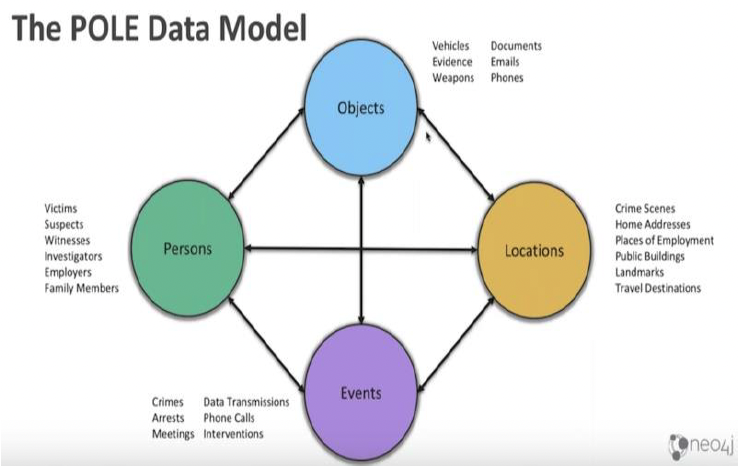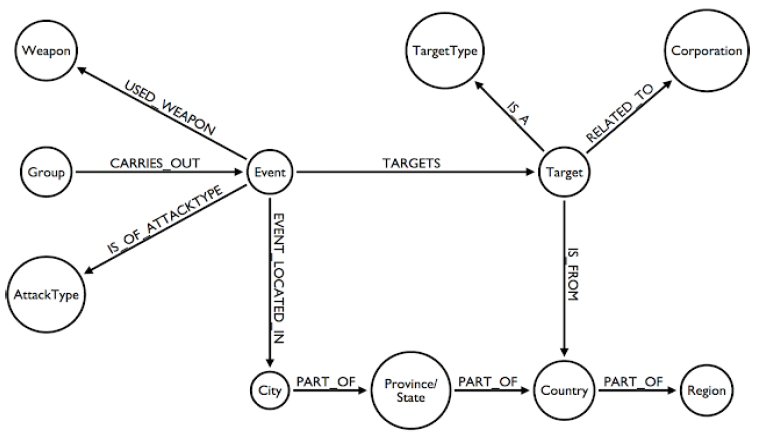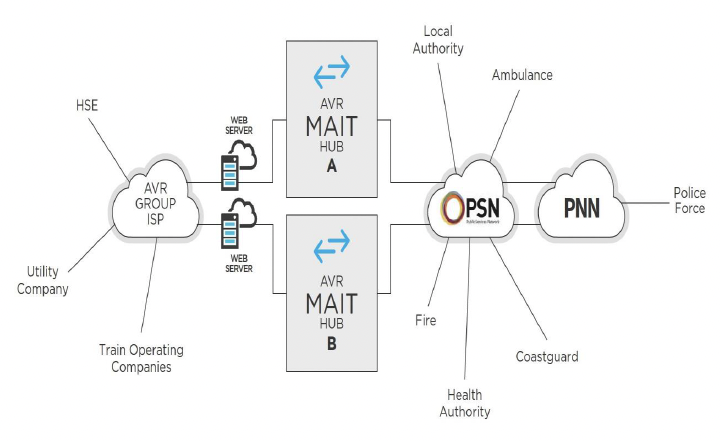Research evidence, technological innovation and scientific standards in policing workstream report
Final report of the research evidence, technological innovation and scientific standards in policing workstream of the Independent advisory group on emerging technologies in policing.
Innovation and standards
Author: Prof Bill Buchanan OBE
5.1 Introduction
There can often be weaknesses within organisations in regard to innovation around technological developments. Along with this there can be external concerns around the adoption of technology. Within policing, there have been many studies on the adoption of technology [23, 24], and many point to the requirement for strong leadership from project leaders and chiefs in the roll-out [25], along with making sure that there is sufficient training involved [23], the involvement with internal stakeholders [26], and in understanding issues related to moral and ethical issues.
The chapter outlines some of the background around how innovation around technology is currently handled, and also outlines some key areas of technological advancement which would further support the work of Police Scotland.
5.2 Background
Matusiak et al [27] define a classification for innovations within policing. In terms of ranking innovation, they investigated the chief officer's perception of the impact of the innovation (a full listing is given in Appendix C), of which the top areas of innovation were ranked as:
1. Combined DNA Index System (CODIS).
2. Mobile data terminal (MDT).
3. Electronic fingerprint services.
4. Computer-aided dispatch (CAD).
5. Automated Fingerprint Identification System (AFIS).
6. Crime lab testing.
7. Next-generation 911/Text-911.
8. Body-worn video cameras or recording devices.
9. Facial recognition.
10. Facebook for public relations and reputation management.
11. Aerial drones/UAVs.
12. National Integrated Ballistic Information Network (NIBIN)/Integrated
Ballistic.
13. Identification System (IBIS).
14. Facebook as an investigative tool.
15. Mobile thumb and fingerprint scanners.
16. GPS tracking of suspects (e.g., cell phone).
5.3 Innovation programmes
Walsh [23] conducted research around the usage of technology for the Bureau of Justice Assistance Strategies for Policing Innovation (SPI) program. This included two strategies: risk terrain modeling (RTM) and social network analysis (SNA). While successful in creating interventions, the report outlines weaknesses around the lack of buy-in at the line level and for the need for specialized training and staff. Within a 13-week trial, and using RTM, one area saw a 36% reduction in violent crime within high-risk areas. With SNA, officers were able to source links between individuals and for ranking offenders within criminal networks.
Delle et al [24] studied the adoption of social media within Quebec police organization. They found that the the perception of the technology had a fundamental role in its adoption, and around organizational factors (such as the person's role within the organisation).
Tatcliffe et al [26] investigated whether micro-grid crime prediction conflicted with the role of police offices on the beat. The limitations of the technology included spatial, temporal, and spatiotemporal inaccuracies and/or unresponsiveness conflicted with officers' craft-based knowledge, along with the technology overriding officer's experience. Some officer's, though, identified that the technology complimented their experience. A key finding is that internal stakeholders should be involved involved in the planning process for a roll-out at any early stage.
Ernest et al [25] define the lessons learnt from the National Police of the Netherlands. The key finding was that the:
- use of technology in the daily routine of police practice depends on flexible and customized support from facilitating services, the motivation and perseverance of project leaders and police chiefs, a clear organizational structure, and governance and the related timely and fitting decision-making on project development. Overall, the police organization needs a clear innovation strategy and vision on technology.
Alosani et al [28] investigated the impact of technological change with the Dubai Police. For innovation the work found RBV (resource-based view) theory [29] was useful in innovation and strategic planning. This method too was successful applied by Abdulhabib et al [30] when understanding the affect on technological change within the Sharjah Police.
5.3.1 Predictive policing
Mastrobuoni [12] defines that predictive policing improves policing productivity within crime clearance rates. In many cases criminal strategies are fairly predictable, and that predictive methods have a significant effect on crime rates.
5.3.2 Body worn
Nowacki et al [31] outlines a study of body-worn camera (BWC) within 823 agencies, and found that departments which successfully implement technology are more likely to adopt further methods.
5.4 POLE standards
POLE (Person, Object, Location or Event) Standards being developed by the Police Digital Service [32]. Depeau [33] outlines that graph technology could considerably help the adoption of the POLE data model for crime data (Figure 5.1). This includes using the Neo4j browser [34], and where graphing could be used not only by the police, but by other government agencies. This may relate to the relationships that people have to others with criminal records. Depeau [33] created a Neo4j graph database of 29,000 crimes in 15,000 locations, and generating 106,000 relationships between these nodes. This type of model allows for the investigation of complex relationships and associations. Bruggen outlines graph model for a GTD (Global Terrorism Database) (Figure 5.2) and which integrates a POLE methodology.



5.5 MAIT standard
MAIT (Multi Agency Incident Transfer) [22] provides the ability for emergency services to securely share electronic incident records in the form of XML. The CAD to CAD information exchange time is significantly reduced and allows accuracy and timeliness of information allowing informed decision making when dealing with other agencies. This frees up more time spent with callers and obtaining quality information. This is currently being used in South Wales Police, Gwent Police and South Wales Fire and rescue services and has cut resource deployment by more than three minutes per agency.
The AVR Group Hub is defined in Figure 5.3. It can that the hub links to the police network through the PNN, and links to Fire, Health, Coastcast and Ambulance through the PSN (Public Service Network). There is then links to train and utility companies through a trusted hub. Overall, it has been found that the time taken to log and respond to emergency calls has reduced from an average of four minutes to 16 seconds. Core benefits of the MAIT protocol include: fast CAD-to-CAD data exchange; a consistent view of incident data; and improved shared situational awareness [35].
In the US, a MAIT approach has been used within the response to serious traffic incidents, and where officers are trained in the use of vehicle dynamics, scene photography, CAD software and surveying equipment [36].
5.6 Data sharing
The ability for the general public to share data with the police should not be dismissed, but should, of course, be handled with care. Shore et al [37] outlines that high situational severity crimes causes a high intention to share data with police. This type of data is often useful in gathering data on evolving incidents, but should be understood for the trustworthiness of the data gathered.
In terms of crime investigation, Jing [38] outlines Crime Prediction Techniques Based on Big Data in Table 5.1.
| Prediction target |
Prediction technology |
|---|---|
| Crime Location / Victim Advanced |
hot spot identification models Regression, classification, and clustering models; Near-repeat modeling |
| Crime time |
Spatiotemporal analysis methods |
| Crime place |
Risk terrain analysis |
5.7 Conclusions
As shown in Chapter 4, there are evolving standards that could provide a foundation for future innovation. MAIT [22] and POLE (Person, Object, Location or Event) are two such standard that could provide a platform for future integration. Overall, the use of technology in the daily routine of police practice often depends on: flexible and customized support from facilitating services; the motivation and perseverance of project leaders and police chiefs; a clear organizational structure and governance; and the related timely and fitting decision making on project development. Overall, the police organization needs a clear innovation strategy and vision on technology.
Consideration: There should a strong focus on inter-agency approaches to secure data sharing, including the adoption of POLE and MAIT.
Contact
Email: ryan.paterson@gov.scot
There is a problem
Thanks for your feedback